5 Easy-to-Teach Rules for Kids to Help You Keep Things Clean

5 Easy-to-Teach Rules for Kids to Help You Keep Things Clean
Keeping the house clean can be very difficult. If you have kids, it can feel downright impossible. Fortunately, just by teaching your kids a few simple rules you can actually cut down on a huge amount of the clutter that is created on a daily basis.
Written by Liz Bayardelle, PhD | See Comments | Updated 05/06/2019
Want to cut to the chase?
Indoor Activities for Toddlers Guide
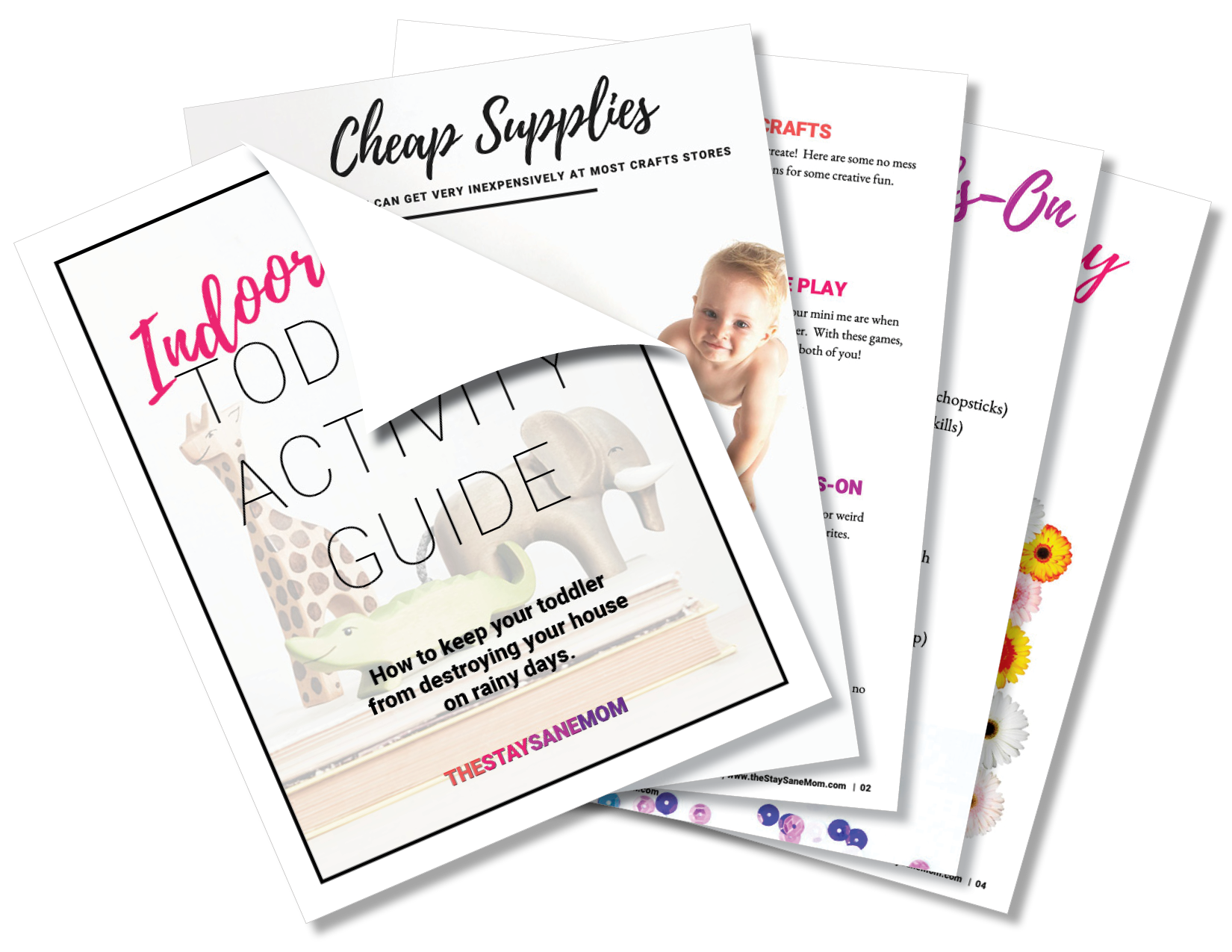
Want to cut to the chase?
Indoor Activities for Toddlers Guide
Get the Free Printable eBook Now
Get it Now5 Easy-to-Teach Rules for Kids to Help You Keep Things Clean
This post contains some affiliate links for your convenience. Click here to read my full disclosure policy.
Keeping the house clean can be very difficult.
If you have kids, it can feel downright impossible.
You may feel as though the mess is continually mounting and that you also find it hard to stay on top of it all. Fortunately, just by teaching your kids a few simple rules (and of course enforcing them consistently until they actually penetrate their thick little skulls) you can actually cut down on a huge amount of the clutter that is created on a daily basis.
These rules have been amazing in our home. Actually, there are days when these three rules are the only thing keeping me from absolute insanity.
Try them out in your house. As with everything kid-related, the rules don't really start to help out until your kids internalize that they are there to stay. It might take a few uphill battles to get your kids on the bandwagon, so to speak.
However, once your kids realize that resistance is futile, these simple gems will keep a majority of the kid-related clutter at bay and make your life much more manageable.
Rule #1: Everything Has A “Home”
This one is something I actually use on myself too.
If there are multiple places an object can live, it could be almost anywhere without looking out of place. However, if every noun in your home has an exact location that it “belongs”, anytime it is out of that place, it is going to stick out like a sore thumb.
Even if things go in themed boxes, every object in your house, down to the last toothbrush and squeaky toy, should have a place where it “lives”.

The way to train your kids with this is, when you’re putting stuff away, you can ask “is that where that lives?” any time they put something away in the wrong location. Especially if you start while your kids are still little, they will soon become accustomed to the fact that everything has a home and should live in that home anytime it is not being actively played with.
An additional bonus to this rule is that it really does help you not lose things as well.
If there's only one spot you set down your keys, then they are much less likely to be misplaced. The same goes for phones (which used to get left in a crazy variety of places). If it's not in my hand, it's sitting on the charger upstairs by my bed or the charger downstairs on the kitchen counter. No more finding my cell phone in the refrigerator! Huzzah!
Rule #2: Set Playtime Rules
Since the beginning, I have taught my youngest daughter the easy sequence of take out a toy, play with it, put it back, THEN take out the next toy.
(I’ll admit, I have it a little bit easier with her because I have never wavered on this rule. She doesn’t know any other way and will be shocked and appalled when she gets to the real world to realize that not everyone does this.)
Before they move onto the next thing, they need to put away whatever it was they were playing with before.
As I said, the younger you start, the more kids are usually quite happy to do this. if you have older kids, it might take a bit of consistency to get them into the habit, but once they realize the rule is there to stay, they will eventually take the path of least resistance and begin abiding with it.
This is a glorious rule because it means that you never walk into a room to see all the toys have been jumped on the floor like Mayhem. The worst thing you have to deal with his one messy project little time, not fifteen.
Rule #3: You Have to Earn It (a Little Tough Love)
If your child doesn’t want to put their toys back then they do (unfortunately) need a consequence for it.
You can keep a box that is high up and out of the way or even put them in the garage. This is where toys go if they aren’t put back properly in their “home”.
You can establish whatever rules you want for this one. You can have them lose toys if they stay out overnight, or if they are not put away before the next activities started, or whatever system you want, as long as you are consistent about it.
You can allow children to earn back their toys by helping out around the house, doing extra chores, or whatever other behaviors you're trying to train them into.
I’m sure you all saw the majestic “fucket bucket” that was sweeping social media recently. (This is basically the idea that anything not put away goes into a bucket. Is that bucket is not emptied by the end of the day, Mom gets to throw away its contents.)
Whatever you do, make sure you are fair and consistent about it. Kids won't respond as well if you are being overly mean or if the rules vary from day to day. Pick a mild system and stick with it for at least a month straight if you want the maximum benefit of this rule.
Rule #4: Spills Get Cleaned Up Immediately
Anyone who spent more than 15 minutes around a child realizes that spills happen. A lot.
I think it's a pretty safe rule that you can't get mad over unintentional spills. What you can do, however, is trainer kids in “emergency spill protocol” so that things don't get ignored, made worse, or procrastinated until they have set into whatever priceless furniture was just spilled upon.
(Ha ha, like you’re allowed to have nice things.)
I have trained my kids that the second anything gets spilled, everything stops, and the world is basically on pause until they have (with my help, of course) cleaned up whatever spilled.

It's important that those fun things and boring things get paused. If they are doing 15 minutes of homework, the 15 minutes freezes while they're cleaning up spilled apple juice. However, if they're watching 15 minutes of TV, the TV time also gets paused while they get the vacuum to clean up the popcorn they just charge across the room.
This rule only works if it's equal opportunity for fun things and not fun things.
Obviously, long-term stains or large-scale spills are something that should probably be cleaned up by mom (or call in the professionals like Dr. Chem-Dry). however, if it's just a little bit of juice it's something you think they can manage, help them clean it up themselves. The younger you start with this and the more agency you give them, the more capable your kids will be to clean up after themselves and the more second nature will become to do so.
Rule #5: Play Happens in a Designated Play Area
If your child is coloring on top of an expensive white rug, neither one of you is going to have a good time. I can promise you that right now.
However, if you lay down a drop cloth on an easily cleanable floor with clothes no one cares about, your child can have a full-blown paint fight without either one of your blood pressure is raising (and without ridiculous time spent cleaning after the fact).
It's all about creating an area in which your kid is allowed to be a kid, but doesn't run the risk of ruining anything important.
You want to make sure kids know what they're allowed to play with, in what areas. For instance, the toys in the boxes they can reach can go anywhere in the room, but if they're playing with something special they should know where they are allowed to play with that item (like the Play-Doh you keep in the baby proof drawer only gets used at the table...or whatever the house rules state).
Again, you want to make these rules strict enough that your house doesn't become a chaos zone, but loose enough that your kids can still feel like they're playing freely. Kids that are overly stifled might not develop as well as those with a little free rein, but you also don't want to unleash undisciplined hellions upon the general public once they start preschool.
Everything in moderation.
Consistency is Key
Overall, whatever rules you set need to be enforced consistently.
I usually say that parents shouldn't set a rule in last they are willing to enforce it 100% of the time for a month straight. This is just about how long it takes for something to penetrate the head of even the most petulant toddler, so you might even get results sooner than this, but a month is a pretty good practice.
Also, I would probably not advise setting all five new rules at once.
Pick the one that you think would benefit your house the most, set it into practice, and wait a few weeks before you start on the next one. This way you can devote all your attention to training just that one rule and you don't run the risk of overwhelming your kids.
If you don't know which one to implement first, I would go in numerical order. The one that seems to make the biggest difference in most households is every item having one “home”, so it's nothing sticks out to you as super essential for your kids, go with this guy first and then make your way down the list.
Let me know how it works out in the comments, and share any new rules you come up with! I would definitely add to this list if anyone had any gems.
Start Your Next Step
Indoor Activities for Toddlers Guide

Start Your Next Step
Indoor Activities for Toddlers Guide
Get the Free Printable eBook Now
Get it NowGet Sanity, Delivered to Your Inbox.
Care to Share?
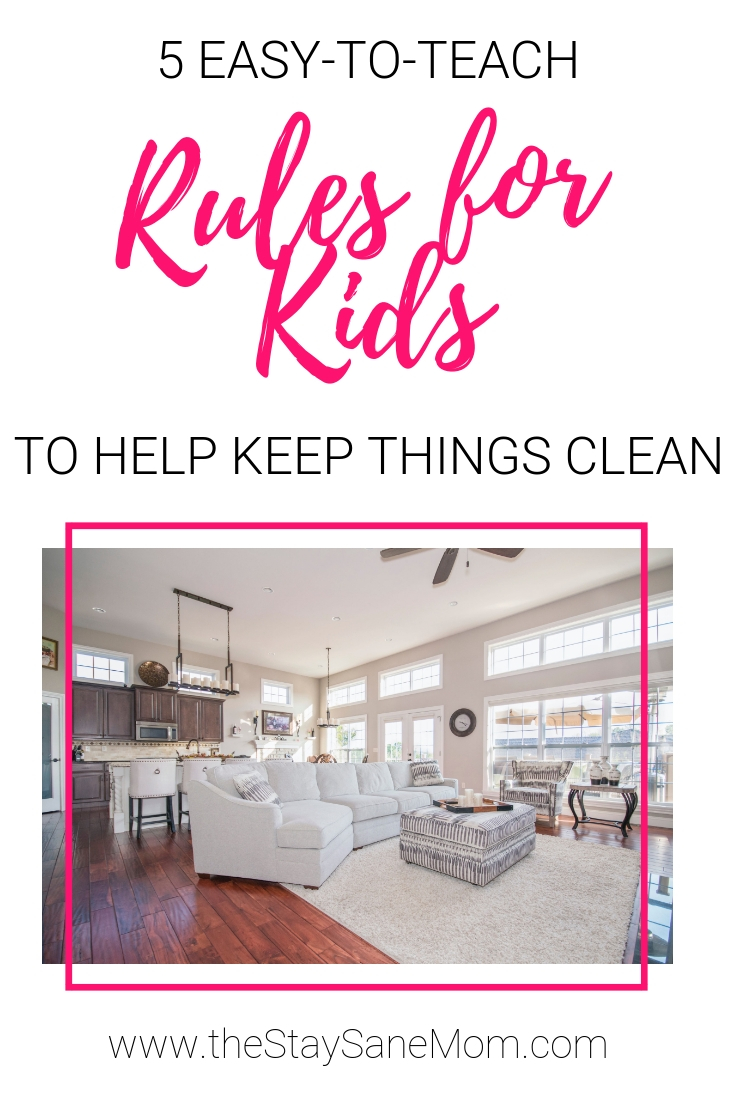
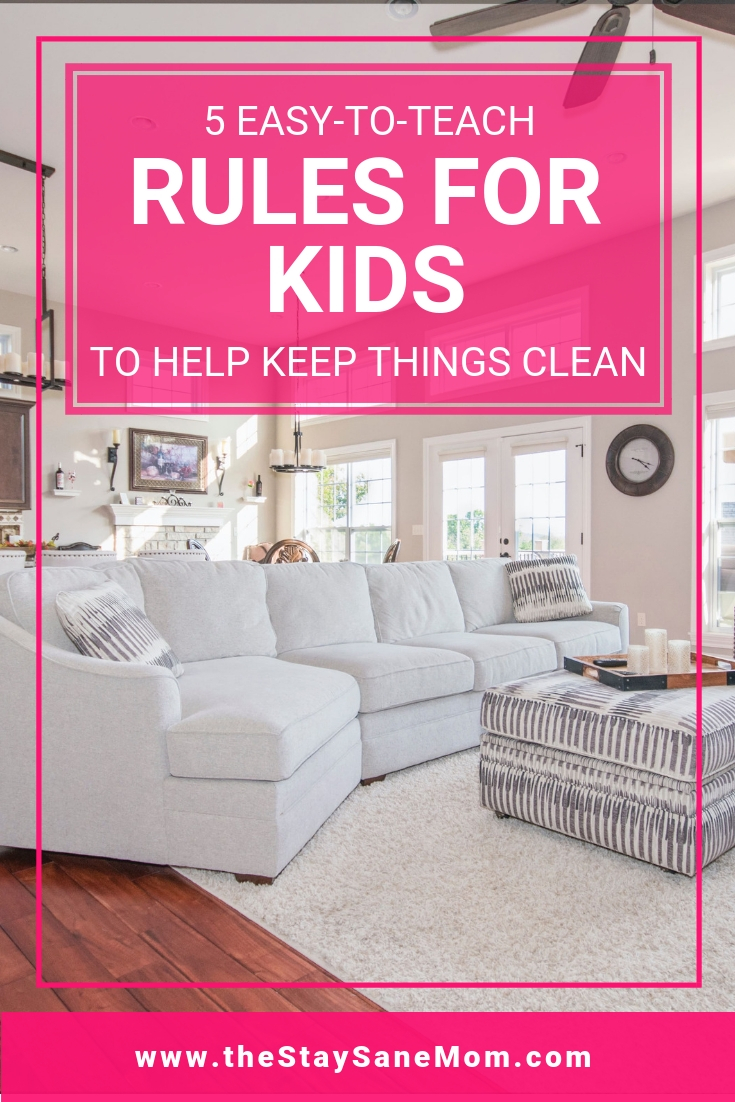
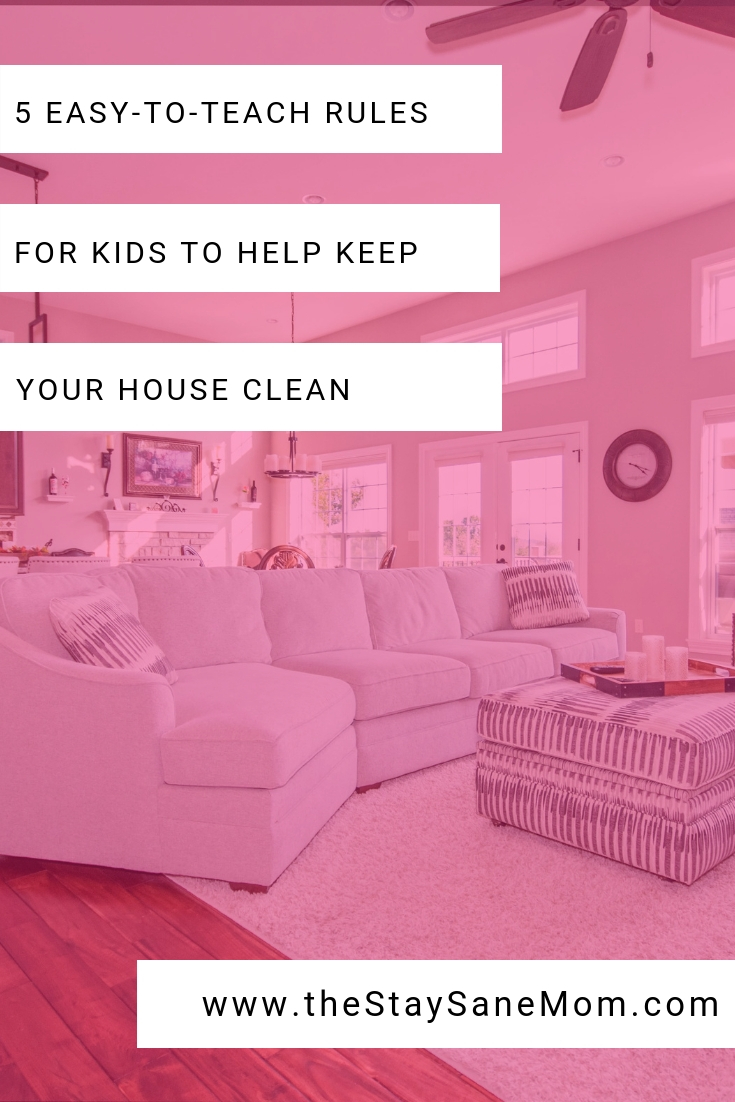
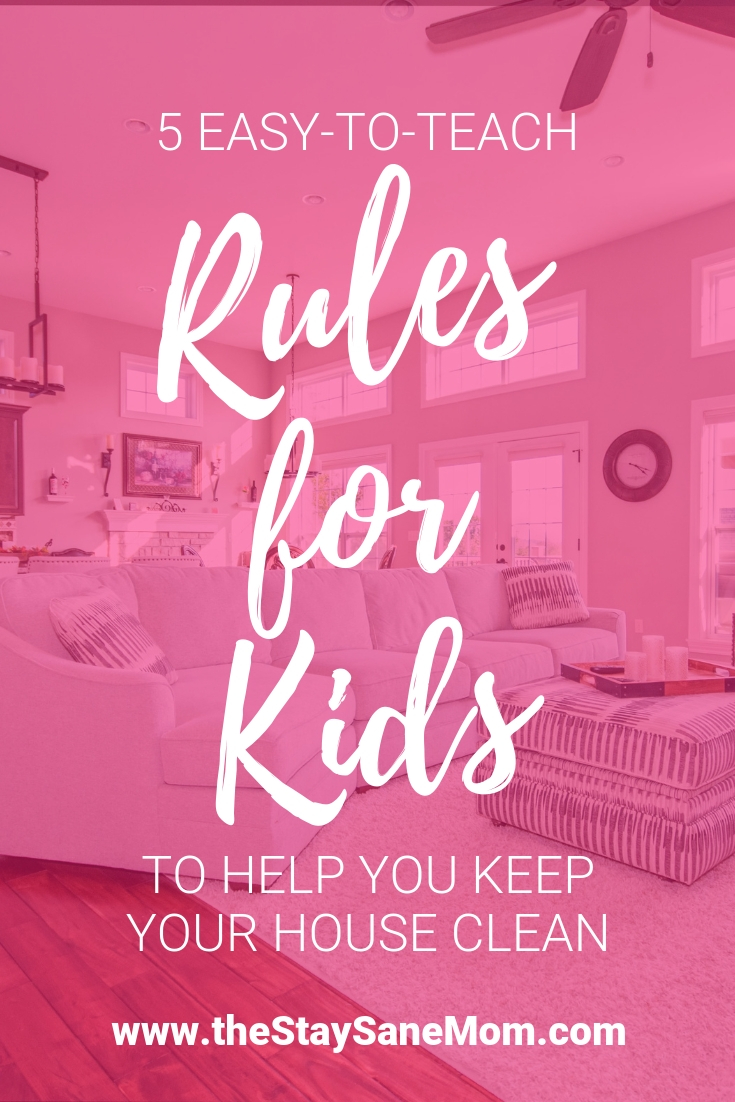
About the Author

Liz Bayardelle, PhD
Founder | Contributor
Liz (or Dr. Mommy, as her toddler started calling her after learning what a PhD was) is the happily sleep-deprived mom of a toddler (and professional raccoon noise impersonator), a sparkle-clad kidnado, a teenage stepdaughter, 200 cumulative pounds of dog, and herd of dustbunnies (if daily vacuuming doesn't occur). During nights and naptimes, she uses her PhD in business psychology as an author, speaker, and consultant. She also serves as an executive and principal for three companies, two of which she co-founded with her very patient (and equally exhausted) husband.





-Budget.jpg)